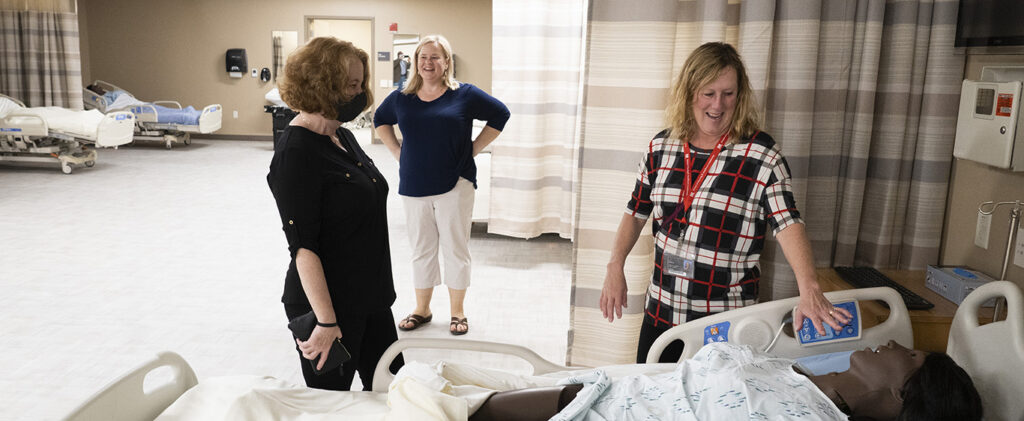
Professor brings past nursing experiences into new BS in nursing at MSUM
From working in a neonatal intensive care unit (NICU) to hospital leadership to volunteering outside of the country, Jill Holmstrom has enough nursing experience to last a lifetime. But she’s not done yet. Though she didn’t plan it initially, she says she has never regretted going into education and teaching our future nurses.

Holmstrom earned her bachelor’s degree at the University of Mary (Bismarck, N.D.), and then continued to the University of Phoenix for her masters and doctoral degrees. Her work has been mainly in NICU and nursing leadership.
Prior to MSUM, Holmstrom worked in nursing education at Concordia College, and after 10 years then became the director of Hospital Nursing Services at Essentia Health in Fargo, N.D. She developed her love for the profession and continues to share that passion and knowledge with future nurses through the programs at MSUM.
Holmstrom teaches and is the program coordinator for the RN to BSN program, teaching classes in nursing leadership, diverse populations, and family nursing.
She enjoys helping her students “discover what the right path for them is,” and says some key qualities they need are compassion and cultural competence.
“[Nurses should] understand where your patient’s background is, where they come from, and what’s important to them from a cultural standpoint,” she said. “Cultural doesn’t mean just ethnicity, there are many different components to being culturally competent, but that’s an important quality for nurses.
Holmstrom enjoys the variety the teaching profession offers. If she finds a student is struggling to find an area that they prefer, she makes sure that they know there are options.
“When thinking of nursing, everybody automatically thinks of the hospital, [but] there are so many opportunities outside of the hospital.”
Holmstrom says it’s fun to help students find what area they want to pursue, although finding that depends on the person.
“You can’t put everybody into one box. You have to look at what their experience has been, and find out what their interest areas are to help them find what’s the best fit for them,” she said.
Holmstrom is excited about the new simulation lab students will use. More than just the interactive mannequins that most people think of when they hear simulation, the design incorporates augmented and virtual reality into the labs. She says this new technology may help students figure out what area of nursing they are interested in.
“When we talk about a patient having a heart attack, [students] can put on the augmented reality glasses, look into the heart, and see what’s actually going on inside the heart while the person is having the heart attack,” she said.
From there, students can choose their next steps, like choosing and administering medication, and watching how that reacts inside the patient’s body.
“It’s going to help strengthen students’ understanding,” she said. “They don’t just need to know the actions they need to do, but they have to understand why they’re doing it.”
She offers this advice for students interested in a nursing career: “Seek out your passion. If you’re passionate about helping others, nursing is for you. It’s definitely a field of putting others first and yourself second.”